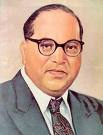- Art of Bharat Ki Sansad: India's
- new Parliament Building
- Republic Day Celebration
26 January 2024
Father of Modern India

Mahatma Gandhi
Selected Sayings of Gandhi
Father of Indian Constitution

Dr. B.R. Ambedkar
INDIAN GOVERNMENT
India gained independence from Britain on August 15, 1947, thus ending the almost 400 years of colonial rule. Under the guidance of Mahatma Gandhi, Jawaharlal Nehru, Sardar Vallabhabai Patel and the other leaders of the Independence movement, the new government of India was formed. These leaders had the wisdom to choose the path of representative government and embraced democracy. They took the British system as an example in the broad concept but instead of a monarch, India opted for an elected head of state; this is the role of the President.
The governance is shared by the government of the country (“the Central Government”) and the state and local governments. (State, district, Panchayat and city administrations) in most categories but the national defense and foreign affairs are the sole responsibility of the central government. At both the central and state levels checks and balances are maintained between the law makers (the elected representatives), the executive branch, composed of the ministers and their administrative “Secretaries” and the legal system.
The structure of the state administration is roughly similar to that of the center with some appropriate differences. Examples are, the Governor is the top official (same as the President at the center), the Chief Minister is like the Prime Minister at the center and the top court is the State High Court.
THE CENTRAL GOVERNMENT:
This can be divided into four subdivisions:
a) The President and Vice President
b) The Prime Minister, his/her Cabinet of Ministers
c) The upper (“Rajya Sabha”) and the lower (“Lok Sabha”) houses of parliament
d) Supreme Court of the land
The President and Vice President:
According to the Indian Constitution, the President (“Rashtrapathi”) is the ceremonial Head of State. However, he/she is a figure head and ordinarily takes no part in the legislation or execution of the law of the land, other than signing such documents that the government currently in power have enacted. In exceptional circumstances, the President can assume extraordinary powers. Examples are proclaiming a state of emergency in the case of external armed conflict or internal rebellion or in dissolving the government of a state when it is deemed that the state has failed to govern according to the constitution.
The President is elected (from a list proposed by the ruling party as well as the major oppositions) by an electoral college made up of the members of both houses of Parliament as well as the legislation assembles of all states. This process is in stark contrast to the “Imperial” Presidency of the United States of America where a powerful executive is elected by the powerful executive by the general public in a nationwide election that takes place every 4 years. The term of the Indian President is five years.
The Vice President, who acts as the chairman of the Rajya Sabha, is also elected by an electoral college every 5 years. He also assumes the powers of the President when the latte is incapable by illness or is out of the country for official purposes.
The Prime Minister, Ministers (and the Secretaries):
The Prime Minister is the leader of the ruling party or coalition of parties. He (or she) proposes the names of persons to head the various ministries. Departments of Foreign affairs, Defense, Finance, Internal affairs, the Railways etc are some of the primary ministries but other ministries may be formed by the Prime Minister as deemed fit.
Career professionals called “secretaries” and their subordinates function as the advisers as well as those empowered with carrying out the orders of the cabinet and the houses of Parliament. All the secretaries and their staff are housed in the “Secretariat”
Rajya Sabha:
This house is constituted by 233 representatives nominated by the members of the legislative assemblies of the states and Union territories. A further 12 are nominated by the President.
Lok Sabha:
The members of this house are elected from across the country directly by the people. Currently there are 545 members and two more nominated by the President, to represent the Anglo-Indian community.
Supreme Court:
The independent judiciary functions as a counter balance to the government. Disputes that work their way through the state courts are finally arbitrated in this highest court of the land. Nowadays many conflicts (between the various combatants, which may even include the government), are resolved in the Supreme court; some see this as a failure if the democratic process. However, this independent judiciary is a valuable limb of the government.
Sources:
http://indiaserver.com/biz/India-political-system.html and Encyclopedia Britannica.